Rosin for VIOLIN, cello or viola
What is Violin Rosin?
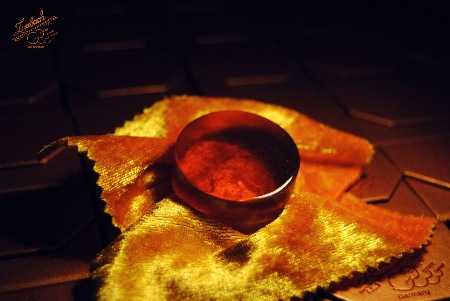
Rosin is a resin collection obtained from multiple different types of pine trees. After a
tapping process, the rosin is hardened and packed into a cloth or container. After this
process, the outside layer will seem smooth and solid. However, once the rosin is
scratched, it then reveals a sticky texture.
Back in the 10th to 12th century people were using resin taken from fir and pine trees for painting and making watertight their wooden boats. In the mediteranian east people were also looking for better playing on stringed instruments about that time. They firstly were using sticks giving them a rough surface for striking the strings made from dryed sheep gut mostly. Later people found out to take long horse hair instead of a sinew for bowing the strings which proved to be the perfect invention but with a layer of rosin paste to the bow hair. Only the bow hair with rosin gave the necessary contact and strings could be pushed into vibration.
What is Violin Rosin Used For?

Rosin is a key ingredient in making music on the violin. The rosin is used on violin bow
horsehair to provide a sticky film on the surface of the hair. This sticky film allows bow
hair to “grab” the strings on the violin, thus producing sound. Without any rosin at all,
bow horsehair would just glide over the strings and provide very little sound at all.
What kind of Violin Rosin Should you Buy?
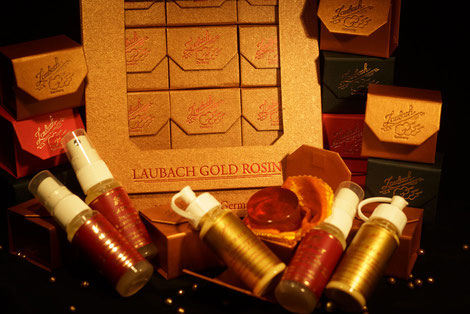
Many beginners know little about rosin and always are satisfied with the default rosin
they get with their violin outfit. Many times this kind of rosin is in a rectangular box and
surrounded by wood. This type of rosin might serve the purpose of rosining your bow,
but I highly recommend going with a better quality gold rosin which allow even beginners to
get better grab out of their violin. These types of rosins are relatively cheap, and listed
below.
What is rosin gold violin for?

Violin Gold Rosin is the substance that a violinist uses to make the hair on his bow sticky. If a bow's hair has never been rosined it will not produce usable sound when drawn across the strings. Once rosined, the hair actually grips the string and pulls it . . . but since the bow keeps moving the string snaps back to its original position . . . where it is caught again by the rosin on the hair and the cycle is repeated. This happens very, very quickly. In the case of your A-string 440 times per second. Without the rosin's grip, the hair just slides over the string and you essentially hear nothing.
How is violin gold rosin made?

The basic ingredient in violin, viola and cello gold rosin is purified pine rosin, and then comes the step that violin rosin makers will not talk about. Each manufacturer has his own recipe. The recipe is a closely guarded secret. Different resins may be added. Some add beeswax. Others even add gold, silver, lead or copper flecks, saying that it adds to the rosin's ability to grip the string. The mixture is cooled, and bubbles are forced out. The thick goo is poured into molds to form the cakes. There is an excellent page showing the production of gold rosin at.

Natural resin was and still is being collected from pine trees in autumn and terpentine oil the result of its destillation. Pieces of natural resin are put into a heated pot to evaporate water while impurities within the hot liquid resin need some time for sinking to the ground. Finally pure liquid resin can be skimmed and cooled down. French and North American pure resin has a light yellow and German pure resin a more brown colour.
In a following procedure pure resin is being heated up again, oil and other ingredients added and the liquid resin poured out into a form to get the final cake musicians are using. This procedure is different among manufacturers and carefully treated as a secret. Therefore rosin cakes are of different quality and influence to bowing technic and to the specific sound colour of the instrument.

Only high quality GOLD rosin enables a perfect bowing without scratching especially if bow hair has a thin layer of rosin only.
Violinists and violists need a more dry or hard rosin, cellists a medium and double bassists a more sticky rosin in general.
Steel strings can be better played with dry or harder rosin,
synthetic strings with medium and generally gut or gut wound strings with a more sticky rosin.
Moreover, experienced players prefer a more soft rosin for the studio and a harder rosin in the concert hall. Dry rosin is best in tropic and soft rosin in cold climate.
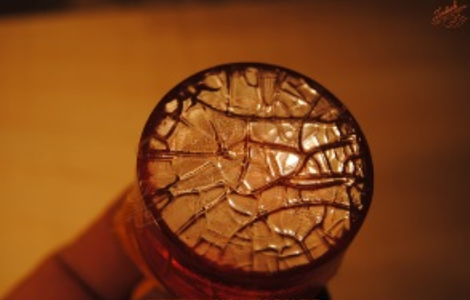
Please remove rosin from your strings, instrument and bow after your play using a soft and dry cloth. Carefully use your string cleaner - alcohol can damage your instrument's surface - and please put some string oil to cleaned plain gut strings to keep their elasticity for their life time.
Special advise: Do not use rosin close to open fire. Dry rosin powder and rosin cakes with their alcohol components can catch fire.
With very few students and musicians rosin may cause allergic reactions by touching the cake or inhalating the dust. In case of rosin allergy there is little or no help for the suffering musician as far as we actually know. At present there are artificial resins available but which could not be used as basic material for rosin.
Getting old, all rosins are losing their characteristical formula slowly. They dry out too much. We recommend to use rosin within one year only.
Is there a big difference between rosin for violn, viola and cellos?

Gold Rosin choice is quite personal. Generally speaking, the darker the rosin the softer it is. Softer rosins tend to be stickier. While stickier rosins produce greater grip on the string, they also produce a grittier sound. Softer rosins also throw off more powder, making things difficult to clean.
A harder rosin will not be quite as sticky, and so will not grip the string as strongly. The problem is that if the rosin is not sticky enough you will not produce the full sound that you desire.
I suggest looking for something in the middle. A dark amber seems to work well. Look for a rosin that is smooth and free of bubbles. Some folks prefer rosin in the form of round cakes. Most student outfits come with cake of rosin mounted in a wood block. There are good gold rosins that come both ways. As you progress and become better at handling your bow you will probably start looking for a stickier rosin and will probably become more selective in the rosin you use, but at all stages of your violin playing career you will be experimenting with rosins.
How Do I Rosin a Bow for violin, viola or cello ?
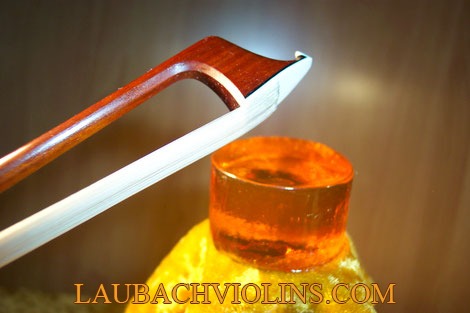
The goal of applying rosin to a bow is to get an even coat of rosin over the entire length of the hair. Too little rosin and you will not get enough pull to use your violin to its fullest potential. To much rosin and you will coat your bow and violin with a fine coat of sticky powder.
There are several rosining techniques, but the one I recommend is to use long slow strokes along the bow's entire length. Press the bow gently against the rosin and move it in both directions so that you collect rosin dust on both up-bow and down-bow strokes. Change the position of the rosin as you go along. If you are using a round cake, turn the cake slightly after a few strokes. If you are using a rosin in a wood block use the right side, left side and middle of the cake. Doing this will prevent you from actually wearing a channel into the rosin. Keeping a smooth surface on the rosin cake will make it most effective.
As you draw the bow back and forth, be aware of the amount of effort it takes to move the bow. I realize that it never takes much, but you will find that as more and more rosin clings to the hair it will become easier and easier to draw or push the bow across the cake. The change will be very subtle, but if you pay attention you will learn to feel it.
Once you have reached a point where the bow travels smoothly STOP. Putting more and more rosin on the bow will just produce that cloud of rosin dust that your neighbor will find so distressing. (More about this in a moment) I like to tap the bowstick on my hand a few times to knock off any excess rosin before I start to play.
When you finish playing, gently wipe off your violin with a lint-free cloth. A lint-free cloth is necessary so that the lint doesn't actually cling to the rosin on the violin. (A well-upholstered violin is not the sign of a violinist who knows how to handle his instrument.) At the same time you clean off your violin, wipe the rosin from your bowstick. (As always, avoid touching the hair as much as possible.) Caked on rosin does not look good. It is also harmful to the sound of the violin. If you don't wipe the rosin off, you'll soon need to use a cleaner on the violin.
It is also a good practice to wipe the rosin from the playing area of the strings, especially the undersides of the strings. The amount of rosin on a string greatly affects he playability and the tone produced by that string
Do I often need rosin in my bow for celo, viola or violin?
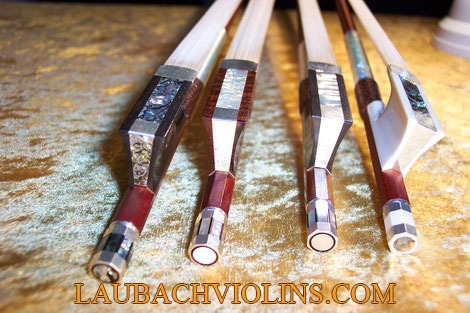
This is another question whose answer varies. The bow hair for violin or viola, the strings used, the temperature, the humidity, the style of playing and the violin's responsiveness all contribute to the answer. The answer can vary from "every few hours" to "every few days." I can definitively say, though, that students do not need to thoroughly rosin their bows every day.
My practice is to "touch up" my bow every day I play. It is more a part of my mental preparation to play than an actual need for the instrument, but actually running the bow across the rosin 6 or 8 times actually does even out the layer of rosin on the hair. If I hear the tone of the violin changing dramatically that is the time that I actually thoroughly gold rosin my bow. Even when I was my most active on the violin, a thorough rosining was almost never needed more than twice a week.
My new violin rosin is not working or poor quality!
If you've never used rosin before, you may not realize that you have to "start" rosin. A new cake of rosin has been smoothed or polished. Simply drawing bow hair across it will probably not pick up any rosin at all! You need to rough up the surface of the rosin before it will cling to the bow hair.
What is the best way to make the application of new rosin most suitable on the hair of the bow ?
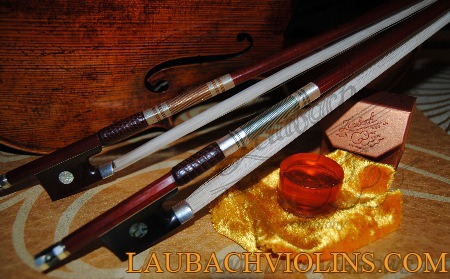
Different methods with the same result. Some folks use a pocket knife and simply score the surface of the rosin in a crosshatch pattern. Some folks use a bow that already has rosin on it and stroke the violin rosin 100 times or so to scratch up the surface of the rosin. I even heard one teacher say that you need to scratch the surface of a new cake of rosin with the screw of the bow that will be using that rosin. She claimed there was some sort of metaphysical bond that formed between the bow and the cake of rosin at that time, and that the rosin would not work as well on any other bow. Me? I just take a piece of fine sandpaper to the top of the rosin and rough it up a little.
The type of rosin used for instruments is determined by the diameter of the strings. Generally this means that the larger the instrument is, the softer the rosin should be. For instance, double bass rosin is generally soft enough to be pliable with slow movements. A cake of bass rosin left in a single position for several months will show evidence of flow, especially in warmer weather.
Types ROSIN for violin, viola or cello

Rosin exist in many different types depending on the production method and physical properties.
The most basic form of rosin is known as gum rosin. Gum Rosin is available in large or small clumps, flakes and powder.
Other types are mainly modified rosin and rosin compounds such as:
- Highly Hydrogenated Rosin
- Partially Hydrogenated Rosin
- Glycerol Ester of Hydrogenated Rosin
- Glycerol Ester of Hydrogenated Rosin
- Non-Crystallizing Rosin
- Polymerized Rosin
- Gum Rosin Rosinates
Important building blocks violin & viola and cello rosin
Rosin is brittle and friable, with a faint piney odor. It is typically a glassy solid, though some rosins will form crystals, especially when brought into solution. Rosin mainly consists of different resin acids, especially abietic acid with general formula of C20H30O2
violin Rosin Solubility
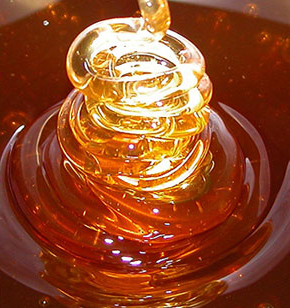
Rosin - Insoluble in water; freely soluble in alcohol, benzene, ether, chloroform, glacial acetic acid, oils, carbon disulfide, dilute solutions of fixed alkali hydroxides. Low toxicity. Hard and friable at room temperature; soft and very sticky when warm. Combustible!
Chief constituents of violin rosin: Resin acids of the abietic and pimaric types, having the general formula of C20H30O2, and having phenanthrene nucleus.
The flammability and fusibility of violin rosin
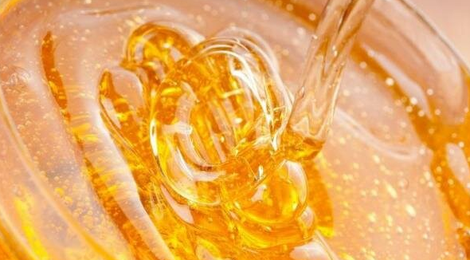
The practical melting rosin point varies with different specimens, some being semi-fluid at the temperature of boiling water, others melting at 100°C to 150°C. Violin rosin is very flammable (Flashpoint 187ºC), burning with a smoky flame, so care should be taken when melting it.
salt in the manufacture of rosin
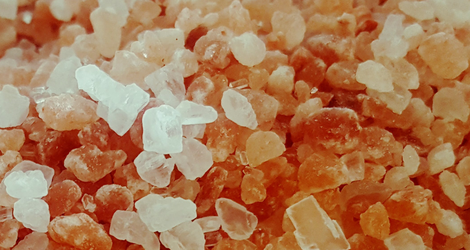
Violin & viola rosin combines with caustic alkalis to form salts (rosinates or pinates) that are known as rosin soaps.
Names - violin Rosin

Violin Rosin is also known by several other names. These include:
- Violin colophony
- Violin resin terebinthinae
- Violin tall oil
- Violin abietic acid
- Violin methyl abietate alcohol
- Violin abietic alcohol
- Violin abietyl alcohol
Avoid all of these. At work, request a material safety data sheet to help identify alternatives that are safe hence avoiding contact with material containing rosin.
Binders and Adhesives from Violin rosin
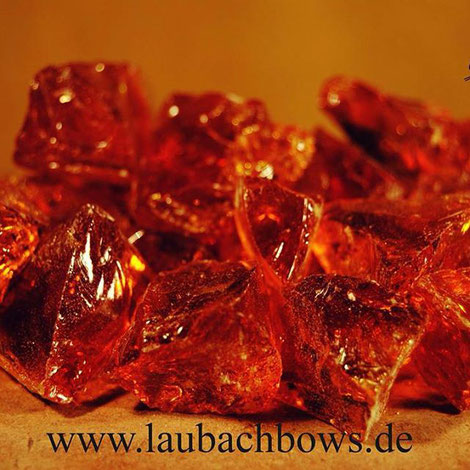
Violin Rosin in a natural organic polymer that is used in many binders and adhesives. Binders help particles to stick to each other or stick to a surface, but adhesives are used to connect pieces or parts.
Violin Rosin based adhesives are usually a blend or mixture of rosin, linseed oil, beeswax. Rosin based adhesives are sometimes used for restoration of ceramics in museums. The ratio of the ingredients vary in different recipes. You can modify the ratio of ingredients to obtain the texture, viscosity, tackiness and drying time that is best for your application.
A similar formula is used to produce ceramic printing inks. Linseed oil, other vegetable oils, violin, cello or viola rosin and pigment are the main ingredients of ceramic inks.
How to apply violin rosin.

Violin rosin is what makes the violin bow grip the strings producing the sound of the violin. Without we would not be able to play violin. Your bow would simply glide over the strings making a whoosh sound.
To apply violin rosin it is really simple, you have to do is take your rosin cake and glide it a few times up and down the bow. Be careful not to apply too much as this will produce a scratchy sound the excess rosin will also drip off your bow and stain the violin.
You should rosin the bow every 3-4 days depending on how often you play. After a while you will develop a feel for how often you should apply the violin rosin.
Violin rosin is made out of sap from pine trees and other conifers. It is made by mixing various tree saps together purifying them and pouring the mixture into molds to set. Rosin is semi transparent and is usually dark to light, red in color but can also come in black and red.

Gold and silver can also be is also sometimes added to high grade Gold rosin for violin or viola and cello to increase friction.
This is also the reason why the most expensive rosin cakes cost 30 of dollars.
In America most rosin is produced in the South Atlantic and Eastern Gulf states of the United States. In Europe the main supply is the French district of Les Landes. In the North of Europe rosin is obtained from Scotland.
Rosin is not only used for stringed instruments, it is used in ballet slippers, printing inks, varnishes, glues, medicines, chewing gum, soap, paper sizing and is used to polish glass and lenses.
How to Rosin Your Violin, and viola or cello Bow
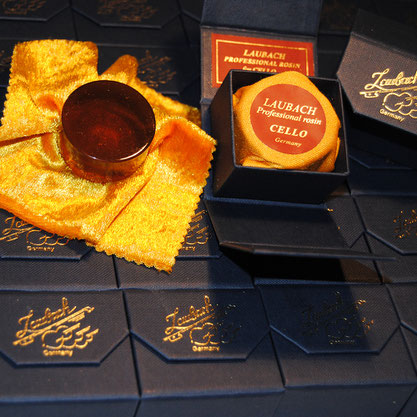
Rosin is the reason that we are able to produce sound on the violin, creating friction that allows the bow to grip the strings. Without rosin, the bow will glide over the stings as if sliding on ice. This article provides a guide for how to apply rosin depending on whether the bow isn't gripping the strings at all, has just been re-haired, has areas that do not play evenly, or, is currently playing to your liking.
If the bow has just been re-haired, it may have been rosined by the shop before it was returned to you (using either a cake or rosin powder), or it may not have any rosin on it at all. If the bow is not playing at all when it is returned to you, you will want to use short targeted strokes against the cake of rosin, to slowly work the rosin into the hair, for the entire length of the bow. This may take a bit of time (which is why the shop will often use a powdered version, which can be applied much more quickly).
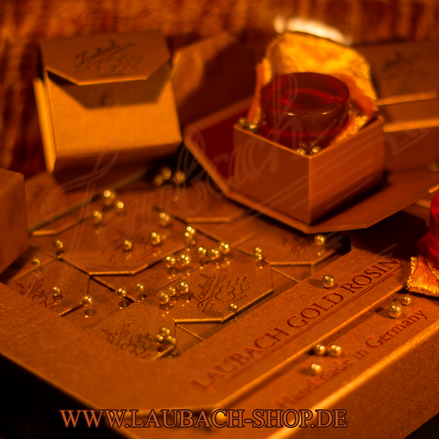
The same technique can be used if your bow does not seem to be playing at all and is sliding on the strings, even when it has not just been re-haired.
On the other hand, if the bow is already rosined and plays to your liking, then you can just use a couple of swipes, the entire length of the bow.
If there are just one or two spots on the hair that you notice don't play evenly or don't play at all, you can use short strokes with the hair on the rosin just to target those specific spots. However, if the reason for these slippery areas is that the hair has become dirty or oily (particularly at the frog, where your hand may rub against it frequently), applying rosin usually will not correct this problem and the bow may need to be re-haired or at least cleaned by the violin shop.
It is important to be very careful not to use to much rosin. This is a common problem that can result in a scratchy sound. You should not see any white powder coming off the strings and bow when you play. Rosin also tends to build up on strings (especially when one has used too much) and therefore it is important to wipe them down after you play.
Is acceptable to rosin in both directions for bowed strings (except for bass).